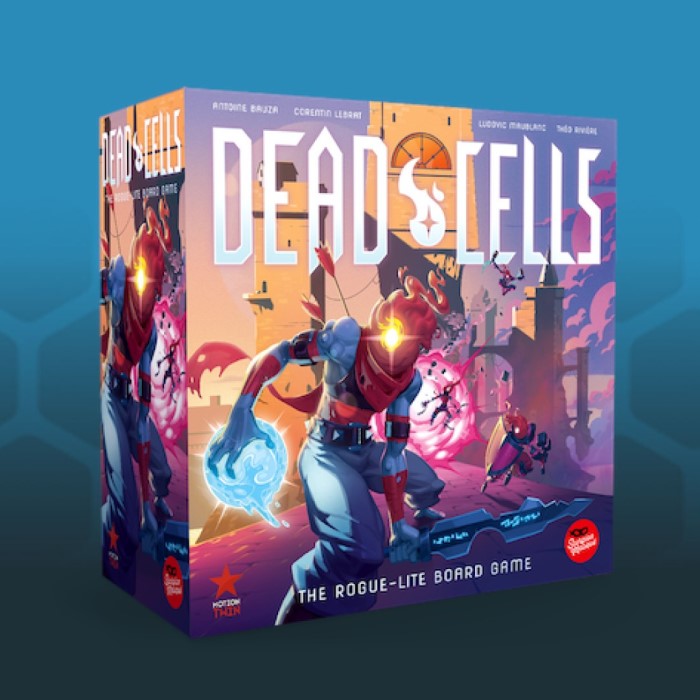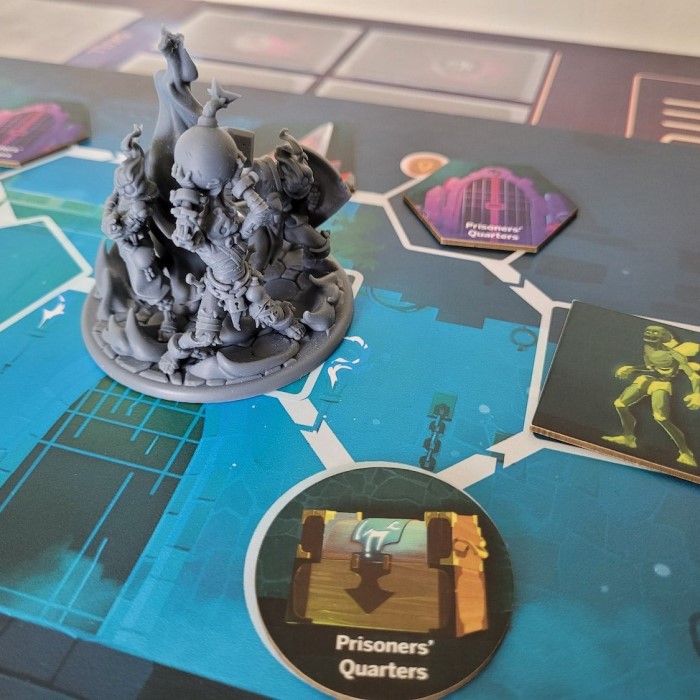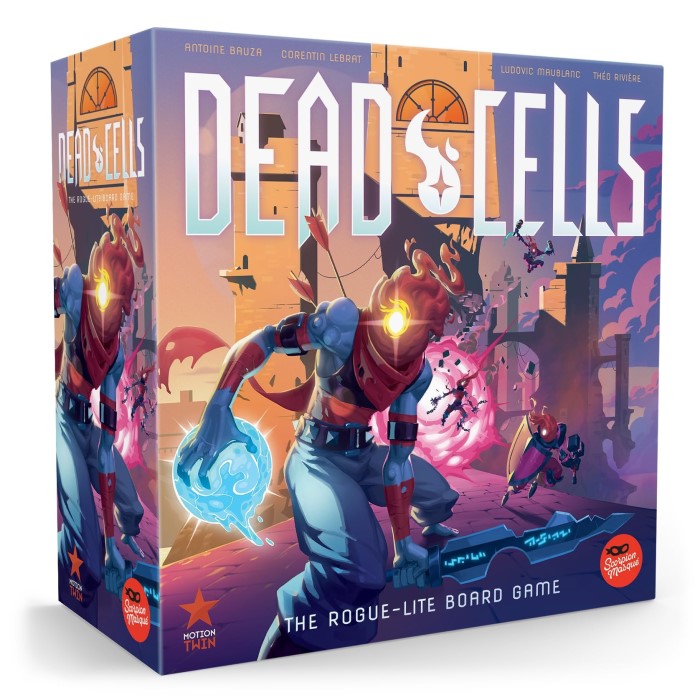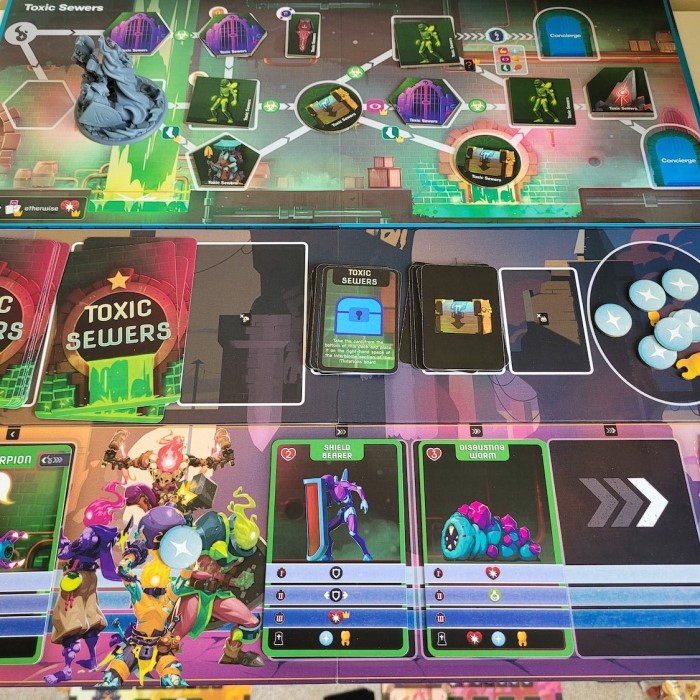Introduction
The Dead Cells board game brings the excitement of the original video game to tabletop play. Players embark on thrilling adventures using beautifully designed characters, engaging gameplay mechanics, and strategic planning. Whether you’re a fan of the video game or a board game enthusiast, this game promises hours of entertainment.

What is Dead Cells Board Game?
Dead Cells board game is a tabletop adaptation of the popular Dead Cells video game. It captures the essence of the roguelike genre with its replayability and challenging dynamics. Up to four players can experience a mix of action, exploration, and strategy in a well-crafted cooperative or competitive setting.
Inspiration from the Original Video Game
The board game draws heavily from the Dead Cells video game environment. The procedurally generated levels, tough enemies, and immersive gameplay are central themes. It maintains the fast-paced, risky combat style while presenting it in a new, tactile format.
Overview of Gameplay Mechanics
The gameplay mechanics focus on strategic movement, resource management, and defeating enemies efficiently. Players interact with the board, tiles, and various accessories that control the pace of the game. Cooperative teamwork and adaptive thinking are often necessary to progress, whether competing or cooperating to achieve victory.
Components
The Dead Cells board game offers a rich array of components designed to enhance gameplay. Each piece is meticulously crafted, ensuring an immersive and enjoyable experience. Let’s dive into the key elements that make this game stand out.
Game Board and Tiles
The game board and tiles form the foundation of the Dead Cells board game. They represent the procedurally generated levels inspired by the video game. Players explore these tiles while encountering enemies, treasures, and secret areas. The modular design allows for infinite level variations, keeping every game session fresh and unique. Tiles are double-sided, adding to the variety and replayability.
Player Characters and Miniatures
Player characters come to life through beautifully designed miniatures. Each miniature reflects the iconic look of characters from the original Dead Cells video game. Players can choose from different character classes, each offering unique abilities and playstyles. The miniatures enhance the tactile experience of gameplay, letting players feel connected to their in-game avatars.
Cards and Tokens
Cards and tokens play a central role in the Dead Cells board game mechanics. Tokens represent various in-game resources such as health, energy, and gold. They help players track their progress and make managing resources easier during the game.

Dice and Other Accessories
Custom dice are integral in determining combat outcomes and other random elements. These dice feature unique symbols that match in-game actions, adding an element of luck and excitement. Additional accessories such as score trackers, player boards, and scenario guides further enrich the gameplay experience. Together, these components create a seamless and engaging tabletop adventure.
How to Play Board Game
Learning to play the Dead Cells board game is simple and engaging. This section outlines the setup, core rules, gameplay modes, and how players achieve victory.
Setting Up the Game
- Lay out the game board and modular tiles as described by the scenario guide.
- Choose player characters and place their miniatures at the starting point.
- Shuffle cards, including action, power-up, and enemy cards, into separate decks.
- Distribute tokens representing health, energy, and gold to each player.
- Set dice and accessories nearby for quick access during the game.
- Follow additional instructions for the selected scenario to complete the setup.
Core Rules and Gameplay Flow
- Players take turns, following the sequence of movement, actions, and combat.
- Use action cards to interact with tiles, enemies, or collect treasures.
- Roll custom dice to resolve combat scenarios and random events.
- Manage resources carefully to maintain health and energy levels.
- Adapt strategy based on enemy placement and tile configurations.
- Progress through levels by defeating enemies and fulfilling objectives.
Cooperative vs. Competitive Modes
- Cooperative Mode:
- Players work together to complete objectives and defeat powerful bosses.
- Share resources and strategize as a team for efficient gameplay.
- Competitive Mode:
- Players compete to achieve individual goals while navigating shared spaces.
- Sabotage opponents or race to gather treasures and defeat enemies.
Winning Conditions
- Cooperative Mode: Team victory occurs when players complete the scenario’s final objective.
- Competitive Mode: The winner is the player with the most points or completed goals.
- Strategize carefully and manage risks to reach the winning conditions effectively.
By following the rules and modes, players can fully enjoy the Dead Cells board game experience.
Strategy and Tips for Success
Succeeding in the Dead Cells board game requires strategic thinking and adaptability. This section provides helpful tips to enhance your gameplay experience.
Planning Your Moves Effectively
- Study the board and tiles before making decisions.
- Anticipate potential challenges based on the enemies and terrain.
- Use your character’s abilities wisely for maximum impact.
- Plan several turns ahead, but stay flexible if plans change.
- Prioritize objectives to focus on the most rewarding actions.
Managing Resources
- Keep track of health, energy, and other vital tokens carefully.
- Avoid overspending resources unless absolutely necessary.
- Collect treasures and power-ups to replenish your reserves.
- Share resources in cooperative mode when teammates are in need.
- Balance offensive and defensive strategies to minimize loss.
Dealing with Difficult Enemies
- Use strategic positioning to gain advantages during combat.
- Attack enemies with the right combination of action cards and dice rolls.
- Group attacks with teammates in cooperative mode to overwhelm tough foes.
- Study enemy cards to predict their attacks and weaknesses.
- Retreat and regroup if a battle becomes too risky.
Teamwork Strategies for Cooperative Play
- Coordinate with teammates to execute complex plans effectively.
- Divide roles to ensure all objectives are covered.
- Keep communication clear and concise during gameplay.
- Share power-ups and action cards to support team members.
- Sacrifice individual goals when necessary to secure team victory.
By mastering these tips, players can tackle the challenges of Dead Cells board game more effectively, regardless of the chosen mode.
Replayability and Expansions
The Dead Cells board game stands out for its high replayability and expansion options. These elements keep the game fresh and engaging over multiple playthroughs. Here’s how replayability and expansions enhance your experience.
Procedurally Generated Levels
- The game uses procedurally generated levels inspired by the original video game.
- Tiles are modular and double-sided, allowing endless combinations for unique layouts.
- Players face different challenges, treasures, and enemies in every game session.
- This ensures no two games feel the same, boosting the game’s longevity.
- Players are encouraged to explore and adapt strategies for new situations.
Adding Variety with Expansions
- Expansions introduce new content such as characters, enemies, and gameplay mechanics.
- Additional tiles and cards offer even more scenarios and challenges.
- Some expansions focus on cooperative play, while others add competitive twists.
- New storylines and objectives keep experienced players invested in the game.
- Regular content updates ensure the game evolves with its player base.
Customization Options for Players
- Players can personalize their experience by choosing character abilities and playstyles.
- Modular tiles allow for custom board setups to match preferred difficulty levels.
- Optional rule sets and house rules give players control over how they play.
- Some expansions include custom miniatures or exclusive game accessories.
- Customization keeps players engaged by tailoring the game to their preferences.
Replayability and expansions ensure the Dead Cells board game remains exciting and flexible. Players will always have something new to explore or try.
Comparisons with Other Roguelike Board Games
Similarities to Other Games
The Dead Cells board game shares key similarities with other roguelike board games. Procedurally generated levels, a signature feature of roguelikes, are present here. Like many roguelike games, it offers high replayability and varied challenges in every session. The strategic management of resources, health, and energy echoes mechanics found in games like Gloomhaven. Additionally, players must adapt strategies based on unpredictable enemy behaviors, a hallmark of the genre.
Another common aspect is cooperative gameplay. Games such as Dark Souls: The Board Game also focus heavily on team-based strategies. Just like Dead Cells, many roguelike board games include custom dice to introduce luck and unpredictability. These elements ensure that no two games are the same, regardless of the number of plays.
What Makes Dead Cells Board Game Unique
Despite its similarities, the Dead Cells board game offers several unique features. One standout quality is its tactile connection to the original video game. Its fast-paced combat and risk-vs-reward mechanics are uniquely tailored for both individual and group play. While many board games borrow roguelike elements, Dead Cells excels in seamlessly blending them with thrilling action.
The modular, double-sided tiles are another unique touch. These tiles offer intricate layouts resembling the video game’s procedurally generated maps, adding depth to exploration. The iconic miniatures, directly inspired by the video game’s characters, bring unparalleled visual appeal.
In addition, Dead Cells stands out with its dual modes—cooperative and competitive. Few roguelike board games provide the option to work as a team or compete for dominance. The balance of character customization and straightforward rules also ensures accessibility for new players and depth for experienced ones.
What truly sets Dead Cells apart is its emphasis on variety. The game is constantly evolving, with expansions introducing fresh content like new enemies, storylines, and mechanics. This ensures that the Dead Cells experience remains innovative and engaging over time.
Where to Buy and Pricing
Dead Cells board game is widely available for purchase, catering to players of all types. It is an accessible tabletop adventure, whether you’re a fan of the video game or new to the franchise.
Availability in Online and Retail Stores
- Online Platforms: Dead Cells board game is sold on popular online retailers like Amazon and dedicated board game websites.
- Local Game Stores: Many specialized hobby shops carry a selection of the Dead Cells board game.
- Developer’s Website: Check the game’s developer’s official store for purchase options.
- Board Game Events: Conventions and fairs often showcase the game and offer exclusive deals.
- Inventory Availability: Always verify stock availability before purchasing in physical or online stores.
Price Range and Editions
- Standard Edition: The basic game can range from $40–$60, depending on vendor and location.
- Deluxe Edition: Deluxe versions may cost $60–$100, with added components and miniatures.
- Budget or Sale Prices: Seasonal sales often reduce prices, offering discounts for budget-conscious buyers.
- Expansion Packs: Add-ons are priced separately, usually between $20–$50 each.
- Regional Variance: Pricing can differ based on local taxes and shipping costs.
Limited Editions and Collector’s Items
Collector’s Edition
- Exclusive Items: Limited collector’s editions are designed to appeal to avid fans and collectors, often featuring exclusive items that are not available in standard versions. These exclusive elements can add significant value to the set and enhance the overall appeal.
- Detailed Miniatures: One common inclusion in collector’s editions is detailed miniatures. These usually reflect characters, vehicles, or iconic moments from the original content. Collectors appreciate intricate designs and craftsmanship, as these miniatures serve as unique displays or collectibles that evoke nostalgia.
- Special Art Prints: Often, special art prints accompany collector’s sets. These prints may showcase original artwork, concept designs, or iconic scenes related to the product. Many collectors enjoy framing these prints or using them as decorative pieces in their homes, further enriching their collection.
Pre-order Bonuses
- Incentives for Early Buyers: Pre-order bonuses are an enticing way to encourage early purchases of products. By offering exclusive items, companies can create urgency and excitement around their products before the official release.
- Access to Rare Tokens: Often, early buyers may receive access to rare tokens or items that enhance gameplay or user experience. These tokens can include in-game currency, unique characters, or special abilities that are not available to those who wait for the general release, making them valuable to committed fans.
- Promo Cards or Limited Items: Additionally, pre-order bonuses might consist of promotional cards, which can be particularly appealing in collectible card games. These cards could feature special abilities or artwork that create a distinction between standard and promo versions, adding a layer of exclusivity to the purchase.
Rare Editions
- Limited Runs: Some products are released as rare editions, produced in limited runs. These editions are purposefully created in small quantities to heighten exclusivity and desirability among collectors. The rarity of these items makes them a hot commodity within the collector community.
- Unique Features: Rare editions often come with unique features or changes compared to the standard versions. This may include alternate artwork, special packaging, or additional content—elements that increase their appeal and worth in collectible markets.
- Collector Demand: Due to their limited availability and unique characteristics, rare editions are often highly sought after. Collectors may be willing to pay a premium for these items, recognizing their potential for appreciation in value over time.
Seasonal Limited Releases
- Special Editions for Events: Many industries utilize seasonal limited releases to commemorate specific events, such as anniversaries, holidays, or milestones. These special editions often reflect the occasion in their design or packaging.
- Collectible Value: Limited releases tied to significant events can substantially increase the collectible value of the item. Fans often appreciate these themed releases, as they encapsulate a specific moment in time or celebration, making them memorable and desirable.
- Market Trends: Seasonal releases may generate excitement and anticipation within the collector community, leading to increased demand. Collectors seek to acquire these limited items to complete their collections, often fueling competitive purchases.
Verified Authenticity
- Importance of Authenticity: When dealing with limited editions and collectibles, verifying authenticity is crucial. Authenticity ensures that the item is genuine and specifically tied to the product’s official release, protecting collectors from purchasing counterfeits.
- Certificates of Authenticity: Many limited editions come with certificates or other proofs of authenticity. These documents validate the item’s unique status and provide information about its production number, signatures, or other meaningful traits that enhance the item’s value.
- Avoiding Counterfeits: Always ensure that any collector’s edition includes appropriate verification methods. Legitimate items from reputable sources typically come with these assurances, while unauthorized copies or counterfeit items may lack such documentation, signaling caution.
Understanding where to buy and pricing options ensures you get the best value for your purchase.
Final Thoughts
Who Should Play This Game?
The Dead Cells board game is perfect for fans of the original video game. Players who enjoy strategic planning and fast-paced decision-making will love this game. Cooperative play enthusiasts will appreciate the teamwork focus and shared objectives. Competitive gamers can explore unique strategies to overcome rivals. Those seeking immersive, tactile gameplay will find delight in its detailed components. Beginners and seasoned players alike can enjoy its easy-to-learn rules and challenging dynamics.
Overall Appeal and Longevity
The Dead Cells board game offers endless replayability through modular tiles and procedural level generation. Its expansions keep the experience fresh with new characters, enemies, and mechanics. The dual modes—competitive and cooperative—add diversity to every session. High-quality miniatures and cards enhance the visual and tactile appeal. Its evolving content ensures long-term engagement for dedicated players. With accessible rules, the game caters to various skill levels and group sizes. Whether new or experienced, players will find enjoyment and challenge for years to come.







